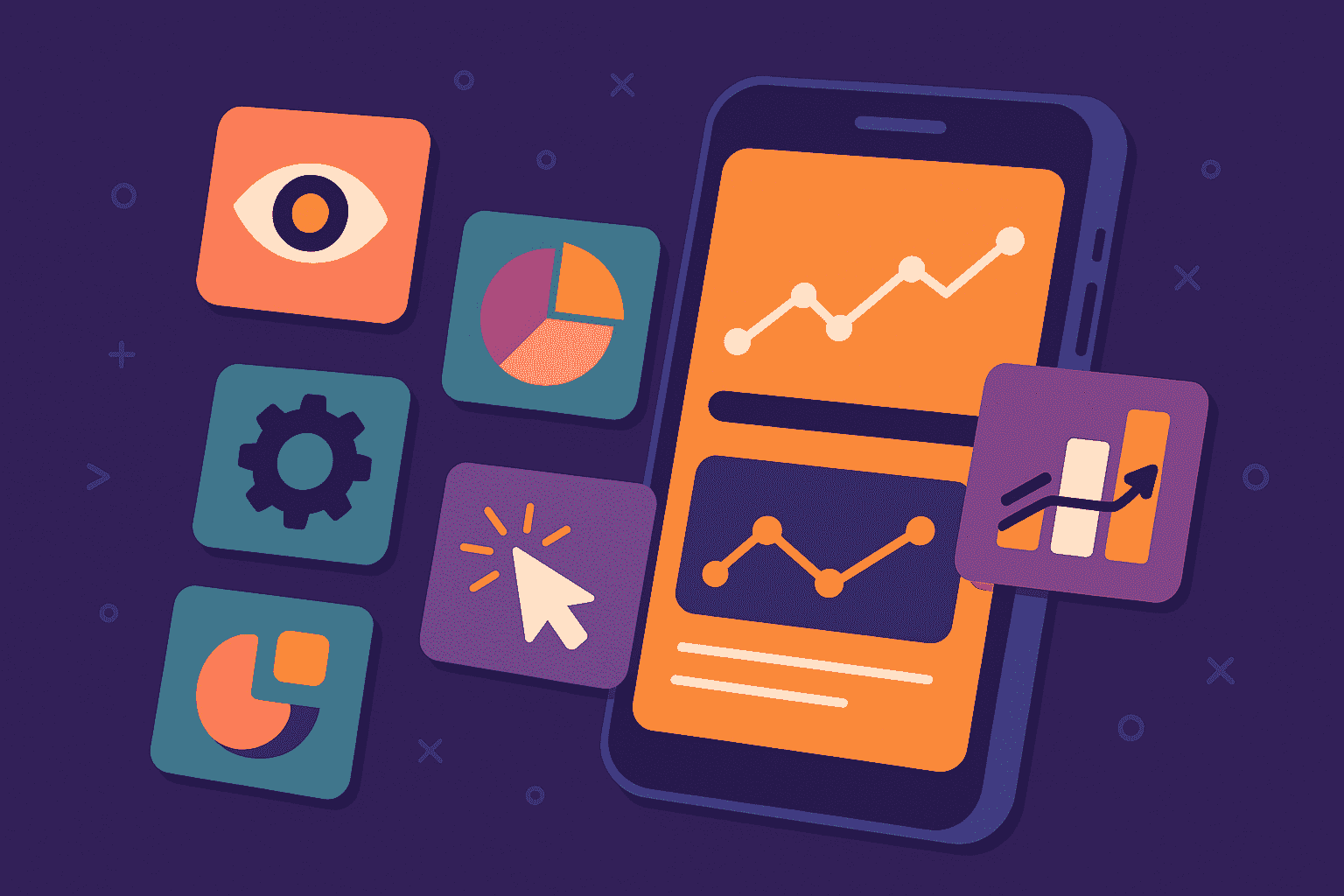
In the world of software development, the terms “bug” and “defect” are often used interchangeably.
Generally, they both refer to issues in the software that lead to unexpected behavior or failures.
However, there are key differences between the two that developers and other stakeholders need to understand.
In this article, we’ll explore these distinctions, why they matter, and how to effectively manage and fix them.
Table of Contents
What is a bug?
A bug is an error or flaw in the code that causes the software to behave unexpectedly or incorrectly.
Bugs are usually introduced during app development due to coding mistakes, incorrect assumptions, or unanticipated user actions.
They can affect any aspect of the software, from its appearance to functionality and performance.
For instance, in Perfecto Mobile’s survey of why mobile apps fail, developers were asked about the most common types of bugs they encounter.
Here’s what they said.

This survey highlighted several major bug categories that developers commonly face.
The highest percentage of encountered bugs refers to user interface (UI) bugs, which are also often called cosmetic bugs.
Why? Because these bugs typically involve visual or aesthetic issues with an app rather than functional problems.
This includes visual elements like buttons, text, or images not appearing properly, or text or images being misaligned.

While relatively harmless to your app’s functionality, these cosmetic bugs can negatively affect user experience and your app’s reputation, leading to higher dropout rates.
The second most encountered type are functionality bugs, which prevent features from working as intended.
For example, a login button that fails to authenticate users is a common functionality bug.
Missing functionality bugs are closely related, as they occur when certain features or actions are entirely absent or fail to appear in the software.
Device compatibility bugs arise when the app behaves inconsistently across different devices, often due to hardware or OS-specific issues.
Lastly, performance bugs slow down the app or cause crashes, typically stemming from memory leaks or inefficient code.
If left unaddressed, these bugs can turn into defects, frustrate users, and ultimately harm your app’s overall success.

Get unreal data to fix real issues in your app & web.
What is a defect?
A defect is a broader term used to describe any flaw in the software that prevents it from meeting the requirements originally specified by the project or product owner.
Therefore, all bugs are defects, but not all defects are bugs.
More precisely, defects can emerge from issues beyond coding errors, such as poor design decisions, logical flaws, or misinterpretations of project requirements.
For example, a defect could arise from a flaw in the app’s architecture that overlooks scalability.
This means an app may crash or not perform well when thousands of users engage with it at once.
One such case occurred with Disney’s Applause app, where viewers were encouraged to download and sync it with TV programming.
However, when large numbers of users tried to use the app simultaneously, it crashed due to scalability issues.
As Thom Jordan, CEO of Ping Mobile, commented:

As highlighted, this performance defect was apparently caused by two factors:
- the app’s infrastructure was not designed to handle large user loads, and
- the app’s new versions were not fully tested to ensure their functionality.
It’s important to note that most defects do not necessarily result in immediate failures, as seen in the Disney example.
For instance, some logical defects can remain hidden during the testing process.
These defects arise when the logic implemented in the code does not align with the intended requirements or outcomes.
For instance, think an app calculating discounts incorrectly, or a feature that fails to activate or crashes the app under specific conditions.

Other types of defects largely overlap with the bug types we mentioned, from user interface and functionality to compatibility and performance issues.
A specific category to highlight is design defects.
These occur when the app’s design does not align with either the project requirements or user expectations.
For example, while the project owner may be pleased with a visually appealing feature, users might be frustrated by how difficult it is to navigate.
Conversely, while users may be thrilled to receive a discount on all items in their shopping cart, the project owner would be furious if the discount was intended to apply only to certain items.
As we move on to the differences between bugs and defects, it’s important to keep these definitions, types, and examples in mind.
They will help clarify how each term applies within the software development lifecycle and inform your approaches to testing and quality assurance.

What are the differences between a bug and a defect?
As we mentioned earlier, bugs and defects are often used interchangeably although they have distinct roles in software development.
In the app development process, a bug typically refers to minor issues caught during the development or testing phases.
As long as these issues are resolved before the product is released, they remain bugs.
However, if these bugs are not fixed and make it to the final product, they are classified as defects because they now prevent the software from performing as expected in a live environment.
Here’s a summary of the key differences between a bug and a defect:
| Bug | Defect | |
| Definition | A coding error or flaw that causes the software to behave unexpectedly but is often caught during development or testing | A flaw that prevents the software from meeting its specified requirements and is usually discovered post-release |
| Scope | Typically a small issue with the code, affecting a particular feature or function | Can range from minor to critical, affecting broader system functionality or user requirements |
| Causes | Coding errors, incorrect logic, or poor understanding of user behavior | Broader issues like poor design, misinterpreted requirements, or unresolved bugs in the released product |
| Resolution | Typically fixed during the testing phase before the product is released | Typically addressed post-release, often requiring patches or updates |
| Priority | From low to high, depending on the severity of the bug | From low to high, depending on the severity of the defect |
Despite some overlaps, a rule of thumb is that a bug transitions into a defect when it is not addressed or resolved before the app is released.
These differences underscore the importance of identifying and addressing issues early in the development cycle, ensuring that minor bugs don’t evolve into major defects.
Now, let’s see why these differences matter.
Why does this difference matter?
Understanding the difference between bugs and defects helps your team prioritize fixes both before and after an app is launched.
Bugs—often detected early in the development phase—may not always impact the overall functionality of the software.
However, they might require quicker fixes because they are tied to other issues (known as dependencies).
On the other hand, defects usually indicate deeper flaws that directly affect the performance or functionality of the software in a live, post-launch environment.
As such, they usually require a more strategic approach, involving an assessment of how a specific defect affects the owner’s business goals and user satisfaction, and how to address it.
In any case, to decide what to fix first, dev teams typically rely on one or more prioritization techniques.
One of these is the MoSCoW method.

As illustrated, this prioritization method helps categorize bugs and defects based on their urgency and impact.
This approach allows teams to address the most critical issues, like system crashes, first, while deferring less urgent fixes to later phases.
By distinguishing between must-fix and lower-priority issues, development teams can:
- prioritize their efforts and allocate resources more effectively,
- better manage owner expectations and address user feedback, and
- minimize the risk of critical defects affecting the app after its launch.
Simply put, understanding the differences between bugs and defects enables teams to categorize and prioritize issues more efficiently, leading to improved software quality and greater user satisfaction.

Capture, Annotate & Share in Seconds with our Free Chrome Extension!
How to fix bugs and defects in software
Finally, let’s outline the basics of how bugs and defects in software are fixed.
Expectedly, the first step is to properly plan the development process.
This involves creating comprehensive product requirements, identifying potential risks, and establishing clear guidelines and procedures.
In doing so, it’s essential to specify how any defects (as the broader term encompassing bugs) discovered during testing and post-launch will be:
- reported and logged,
- categorized and prioritized,
- assigned for resolution and tracked,
- resolved and their resolution verified.
Of course, you’ll also need to determine which software tools to use for bug and defect reporting and tracking.
For tracking issues from their discovery to resolution, project management tools like Jira or ClickUp are typically used to manage workflows effectively.

As for how testers or end-users can report issues they’ve encountered, automated reporting solutions can help you streamline this process.
For instance, if you’re developing a mobile app, our bug reporting tool Shake can enable your testers and users to report defects, and your developers to solve them faster.

Shake enables testers and users to report defects by simply shaking their phones.
This action will prompt Shake to automatically capture over 50 data points and create a comprehensive report.
Here’s just some of the automatically attached data.

Since users can also add comments and highlights, these reports save your developers time and effort they would otherwise spend on investigating what actually happened.
Additionally, the captured data on user actions when a defect occurred helps developers diagnose and fix complex issues more quickly.
And, as Shake easily integrates with other issue tracking and management tools like Jira, these reports can be an integral part of your defect management workflow.
Overall, fixing bugs and defects in software requires a systematic approach, which includes having the right procedures and tools in place.
It also involves thorough testing before the software is launched to ensure bugs are fixed, and continuous monitoring after launch to enable effective resolution of defects.
Conclusion
It’s evident that bugs and defects share many similarities.
That’s what makes understanding their distinctions and when they occur in the software development lifecycle valuable for your QA team, developers, and end users.
By categorizing and prioritizing issues, using the right tools, and implementing a structured defect management process, development teams can identify and resolve problems early.
Finally, we hope that our explanations and examples help you adopt a more proactive approach to bug and defect management, ultimately resulting in a higher-quality software product.






